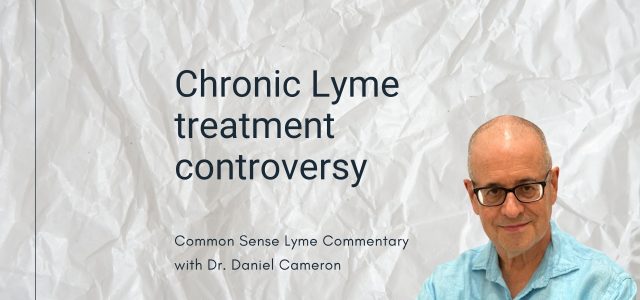Call for your appointment today 914-666-4665 | Mt. Kisco, New York

Our public health system has faced enormous pressure in recent years. Between emerging diseases, evolving science, and the challenge of clear communication, it’s no surprise that public trust has become strained. But for many Lyme disease patients, that mistrust didn’t start with the pandemic. It began with a deeper, longer-running problem: the chronic Lyme treatment controversy.
I see the fallout from this every day in my practice. Patients come to me after feeling dismissed, misunderstood, or told there’s nothing more that can be done. And the impact on their health—and their faith in medicine—is profound.
When Medicine Stops Listening
Many of my Lyme patients were told their symptoms didn’t matter if their test was negative. Others were assured that 30 days of antibiotics would be enough—regardless of how they felt. Some were told their lingering symptoms were just stress or aging.
When medicine becomes inflexible, patients stop believing the system is working for them. This is where the chronic Lyme treatment controversy really begins: not just in the science, but in the silence. In the refusal to listen.
The Testing Problem: Where the Chronic Lyme treatment Controversy Begins
One major driver of the chronic Lyme treatment controversy is the continued reliance on the two-tier Lyme test, which remains the standard diagnostic tool despite its limitations—especially in early infection. False negatives are common, yet many physicians still treat the lab result, not the patient.
This means that even when a patient presents with a tick bite, flu-like symptoms, or migrating joint pain, they’re often told “you don’t have Lyme” because the test doesn’t confirm it. The result? Delayed treatment, worsening illness, and the belief that no one is listening
One Pill for Prevention?
Some patients were told that a single 200 mg dose of doxycycline would prevent Lyme disease after a tick bite. But weeks later, they developed fatigue, joint pain, and brain fog—classic signs of late-stage Lyme.
What they weren’t told was that this approach only aims to prevent the erythema migrans rash. It has not been proven to prevent Lyme carditis, neurologic Lyme, or chronic manifestations of the disease. This is another layer of the chronic Lyme treatment controversy—offering a simplified “fix” while downplaying the complexity of what can go wrong.
The 30-Day Treatment Limit
One of the most widely recognized—and controversial—aspects of Lyme treatment is the 30-day antibiotic limit. Many patients are told that Lyme disease can only be treated with two to four weeks of antibiotics. This time frame is based on a narrow set of clinical trials that excluded patients with more complex or late-stage illness.
But I’ve seen patients continue to suffer after those 30 days—still experiencing fatigue, brain fog, joint pain, or neurological symptoms. And I’ve also seen patients improve with longer or combination therapy. For some, stopping at 30 days cuts treatment short just as healing begins. Yet many doctors are bound by outdated guidelines or fear of criticism.
This rigid boundary is not just a clinical decision—it’s a source of lost time, worsening symptoms, and growing mistrust.
The Overlooked Role of Co-Infections
One of the most significant blind spots in Lyme disease care is the failure to recognize and treat co-infections. Lyme disease is not always the only tick-borne illness transmitted. Patients may also be infected with Babesia, Bartonella, Anaplasma, Ehrlichia, or others. These pathogens often require different medications and treatment strategies.
Yet many physicians are unfamiliar with these co-infections or assume that doxycycline will treat them all. It doesn’t. For instance, Babesia is a malaria-like parasite that requires antiparasitic treatment, not antibiotics alone.
I’ve had patients who remained ill despite being “treated for Lyme,” only to improve once a hidden co-infection was diagnosed and properly addressed. When these co-infections are missed, it’s no surprise that symptoms persist—and that patients lose faith in the care they’re receiving.
PTLDS and the Refusal to Consider Persistent Infection
Patients who remain ill after standard antibiotic therapy are often told they have Post-Treatment Lyme Disease Syndrome (PTLDS)—but that the infection itself is gone. For some, that label brings validation. For others, it brings a dead end.
I’ve seen patients improve after further treatment—sometimes for previously undetected co-infections like Babesia or Bartonella. But in many cases, public health guidelines resist the idea of ongoing infection. This unwillingness to explore alternative or extended treatment options is central to the chronic Lyme treatment controversy.
Why Clinical Judgment Still Matters
Despite all the controversy, one truth remains: no test or guideline can replace good clinical judgment. When a patient isn’t recovering, we need to keep asking questions. We need to stay flexible. We need to treat the person in front of us—not just the protocol.
Many of my patients have gotten better through personalized, extended care—whether that meant longer courses of antibiotics, combination therapies, or identifying co-infections. That’s not irresponsible. That’s responsive medicine.
Rebuilding Trust—One Patient at a Time
The chronic Lyme treatment controversy has created a deep divide—between doctors and patients, between institutions and individuals, and between science and lived experience. But it’s not too late to rebuild.
Lyme disease has exposed where rigid policies and limited tools fall short. It also offers a roadmap for change: listen to patients, treat beyond the lab results, and keep evolving the science.
Trust isn’t something we demand. It’s something we earn. And for those living with Lyme disease, that trust begins with being believed.
Links:
CDC –About Lyme Disease
NIH –Lyme Disease Overview
Dr. Cameron’s website Four Lyme disease educational videos




I was bit by a tick on July 9 and found the tick on the 10th of July. It had a red ring about 3 inches in diameter. I first noticed the night of the 9th of July my groin lymph gland was sore with small knot. Thought at first was a hernia. On the 11th of July went to Urgent Care and doctor prescribe 100 milligram Doxycycline for 7 days. In the past few days I have flu like symptoms headache brain fog no fever. Just wondering if I should have taken antibiotics for 14 days. I’m 70 and good health and want to make sure I stay that way. Spoke to primary doctor today and call Urgent Care back . Have an appointment a month from today with him. Haven’t heard back from Urgent Care. Just want to be proactive with my health.
I treat 3 to 4 weeks for Lyme disease with followup to determine the outcome of treatment. Others do not. Some patients have a co-infection that has not been addressed ie Babesia.
So, I found a tick in hip area, before taking a shower. My attention was only drawn to it, due to it being painful and itchy. I removed it, not realising what it actually was. I do have certain symptoms that are similar to those noted here. But, even before I found the bite, I had had Histamine Intolerance Type Symptoms, but when I would have a Flare – up, my body from the waist down would swell up with oedema. I live in regional Queensland, and am told that the Australian Government does not recognise Lyme Disease. However, apart from brain fog, eye/temperature dysregulation, fatigue etc…. It is the swelling in legs etc… that is really concerning, as it is very debilitating.
It starts around mid day, and resolves over night. I have been trying to research histamine intolerance, mold/mycotoxins and Lyme Disease due to discovering the Tick bite. Also, a lack of functional doctors who are knowledgeable or who recognise these disorders is completely lacking.
Hello Dr. Cameron,
I am kinda stuck here. Can you prescribe me Doxy to help with my war on this Lyme chaos? I am doing Fen Ben twice a day–444 mg along with 125 mg Tocotrienols (Tocopherol-free Sup from A.C. Grace). Next is about 6-8 oz of Teasel, blue velvet, passion flower, and Nutrasilver. Usually add Mullein since I use tobacco but the drops are gone. No worries as I take a Nuquiit mullein Lung Support Bleand Supplement every day along with a fine tuned long ass list of supplements broken out into 3 distinct times of day that I take certain ones together.
My daily Testosterone regimen is still twice a day until I get it up higher on my bloodwork. As of 07 July, per VA Mpls lab, my T is at 537 ng/dL in their “normal” range 221-870 so I want to keep bumping higher. I take Trinfac-b B-12 sup along with T Male, horny goat weed, Arginine & Citrulline, occasionally Tongkat Ali. Also, Ox Bile as needed since I let my St. Cloud VA talk me into having my Gall Bladder removed about 12-13 years ago. Bad move as we could have ultrasounded all the stones backed up or something short of operating. Now I have an outy instead of an inny and they left me a hernia right above my BB. Wish I knew more back then! LOL
I also use Liddell Labs sublingual sprays. They are addictive and someone pointed out that they may be alcohol based so I have to watch it as I am sober as of 12 Feb 2017…Yay me
I will gladly pay your fee if you could see it in your heart to call in or send a script tto Walgreens down the hill for me to get some Doxy or whatever anti-b you suggest.
I fully expect to be Hexxing like a madman, but I want these critters OUT!
I also make an incredible coffee elixir that I drink throughout the day plus a bottle or two of Tonic water.
Thanks if you read this far and it’s nice to meet a homie from Minnie.
Ciao,
Rick Celusta
(320) 761-7726
I am sorry to hear you are still sick. I have found treatment for an infection effective. You should call my office with your question.
7.30.25 Lyme dx rx doxy 250 for 2 weeks 8.9.25 asthma symptoms rx ventolin 8.25.25 rx breo 9.21.25 week of flu symptoms for 1 wk 9.28.25 partial lose of vision left eye DC breo 9.28.25 echo cardiogram: normal 10.21.25 new tic panel normal except continued elevation of IGM MD rx 2 more weeks of doxy. MD bets me no corelation between Lyme and respiratory symptoms So far I haven’t been able to find literature confirming relation between Lyme and lungs. Your thoughts
There are so many causes of respiratory symptom for pulmonary to consider. Of note, Babesia, a tick borne infection can feel like air hunger. This feeling might be due to an autonomic symptom of a tick born illness.